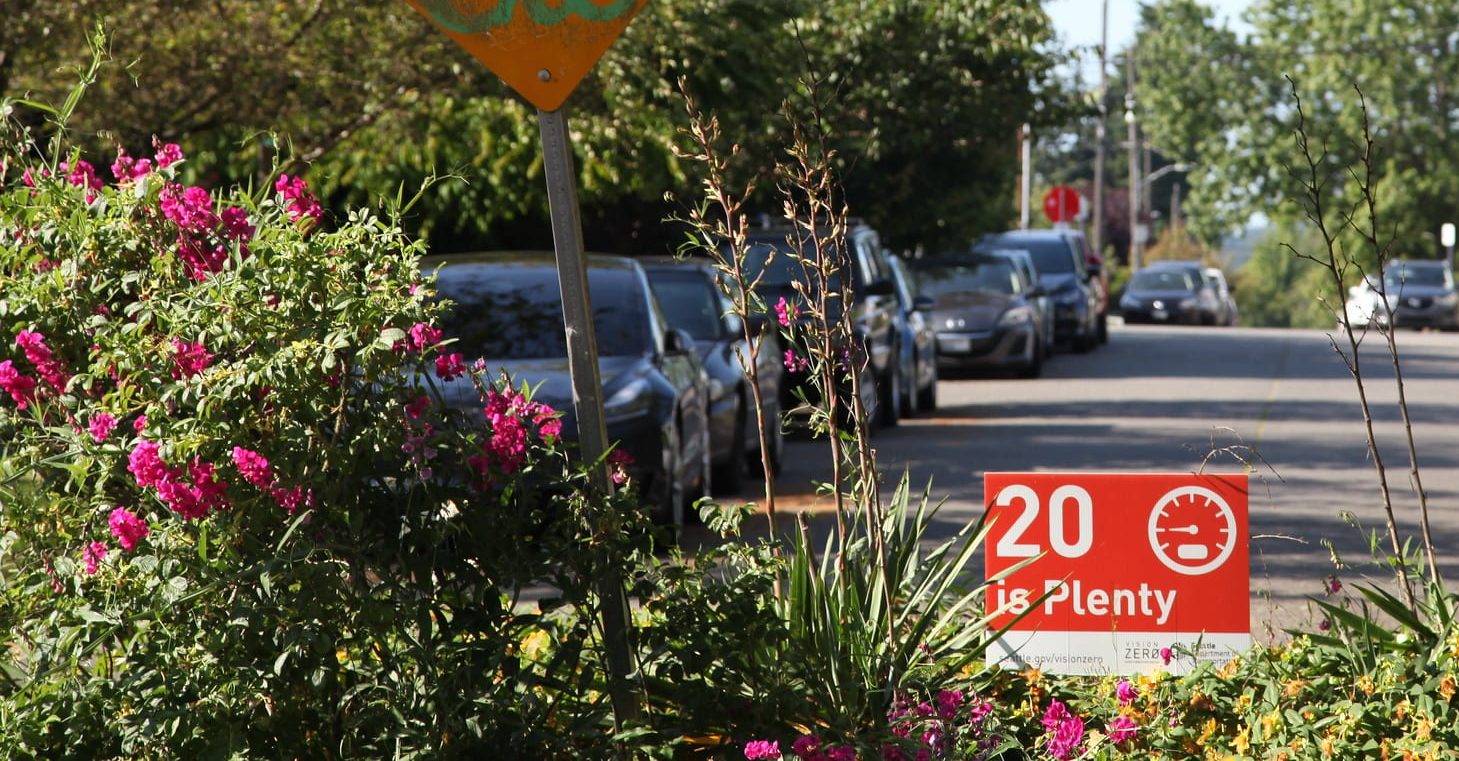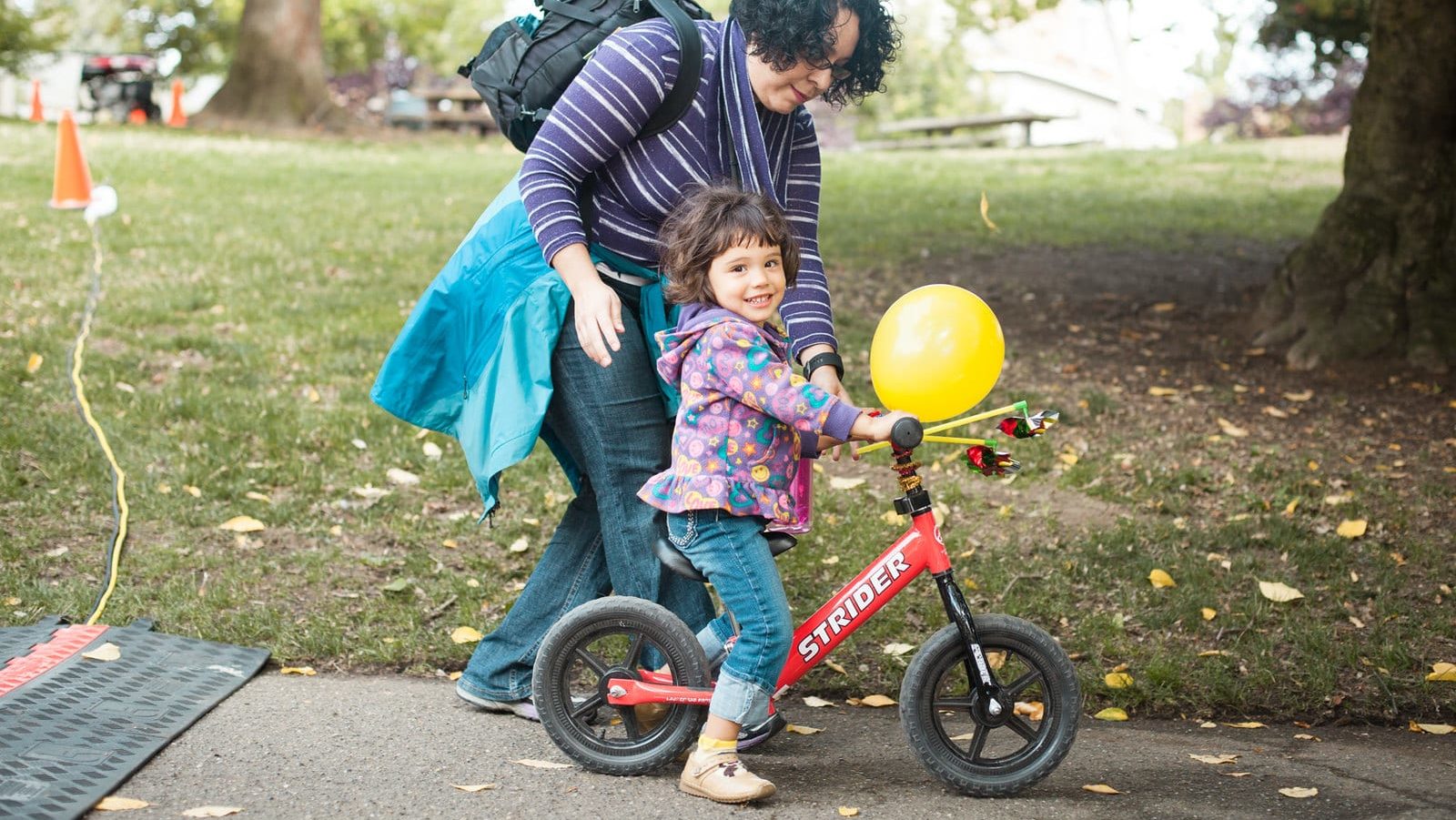
Summary:
- We completed our work to lower speed limits to 25 mph on most major streets in Seattle & installed nearly 2,500 new speed limit signs!
- Case studies conducted in five Seattle neighborhoods help us understand the impact of these changes.
- Collisions are less likely to occur where we reduce vehicular speeds and added more speed limit signage.
- When we reduce speed limits, we can make other traffic safety improvements.
- We also recently updated our traffic signal policy to put the safety of people walking and rolling first.
- There is more work to be done to end traffic deaths and serious injuries.
Just in: We’ve reached our goal of reducing speed limits to 25 mph on most major roads in Seattle – that’s about 415 miles of arterial streets!
This is huge! Reducing speed limits is one of the ways we’ve been working hard to support Seattle’s long-term Vision Zero initiative to end traffic deaths and serious injuries on city streets by 2030.
With funding from the voter-approved Levy to Move Seattle, last year we made significant process in reducing speed limits. There are now about 415 miles of arterial streets marked at the safer 25 mph speed limit, representing almost all of the arterial streets managed by SDOT! In total, we installed nearly 2,500 new speed limit signs along these streets so drivers are continually reminded to follow the speed limit. You can check to see which streets have 25 MPH speed limits on our Seattle Speed Limit Map.
Remember, the default speed limit on arterial streets (most streets with a dividing center line or multiple lanes) is 25 mph unless you see a sign specifically saying otherwise. The speed limit on smaller streets without a dividing center line and near schools when children are present is always 20 mph.
We’re not the only ones focused on safety. SDOT & WSDOT have a shared goal of ending traffic deaths & serious injuries.
We’re working with WSDOT to lower speed limits on state-managed highways which travel along surface-level streets in Seattle like Aurora Ave (State Route 99) and Lake City Way (State Route 522).
We submitted proposals for lower speed limits on these state routes to WSDOT, and must wait for the official approval to make any changes. We will continue our partnership working towards lower speed limits into the future, and expect to know more in coming months.
We both want to keep people safer, everywhere, no matter what streets they are on. To learn more about these efforts at the state level, check out WSDOT’s Target Zero Highway Safety Plan.

Meeting Seattle’s Vision Zero goals requires a combination of big and small approaches, both of which improve safety and save lives.
Lowering vehicular speeds is a key piece of our Vision Zero efforts because speed is the critical factor in the frequency and severity of crashes. When drivers slow down by just a few miles per hour, it has two main powerful effects. First, it makes crashes less likely to occur in the first place. And second, a person who is hit by a driver traveling a lower speeds is much more likely to survive the incident.

For reduced speed limits to be effective, drivers need to know to go slow.
Not only are we lowering speed limits, we’re also installing more speed limit signs throughout the city to make sure that people know how fast they are allowed to drive.
Speed limit signs alone can improve public safety, which is important because enforcement disproportionately impacts Black people and other people of color. At SDOT, we are learning and listening to how our urban spaces disproportionately place Black people in harm’s way. In addition, speed limit signs are the most cost-effective method of reducing speed.

Seattle is one of the first cities in the country to study how reducing speed limits and adding more speed limit signs improves safety for everyone.
We conducted case studies in five Seattle neighborhoods to learn about the effect that lowering speed limits has on safety. We looked at the data on speed and crashes recorded before reducing speed limits and adding more signs, and compared it with data collected after making these changes. The studies took place in urban villages, which tend to be heavy traffic areas and places where collisions are likely to occur.

The data showed that lowering speed limits and increasing sign density alone – without any marketing campaigns, additional enforcement, re-timed signals, or engineering changes to the street – resulted in lower speeds and fewer crashes. There was a 20 – 40% drop in the number of crashes in locations with new 25 mph speed limit signs.
After seeing these results, we doubled down on our efforts to reduce speed limits and increase signage throughout the city.

Speed limit reductions open the door for additional design changes that increase safety and bring us closer to our Vision Zero goals.
Reducing speed limits is an initial step which we can complete quickly as we actively work to secure funding and design changes to the physical layout of the street. For example, we’ve redesigned Rainier Ave S, a high crash street, to support lower speed limits while adding left turn lanes and new bus lanes.
We’re also working on other near-term steps like adjusting traffic signal timing on these corridors to match the lower speed limit. Making the timing adjustments provides an opportunity to re-program signals to give people a few second head start to begin walking across the street before cars get the green light.
And finally, the lower speed limits now allow us to add additional traffic calming improvements that increase safety for people walking and rolling.
COVID-19 has made it tricky to understand the effect of the lower speed limits and the signs we installed in 2020 and 2021.
During the pandemic, more people are staying home and are driving less than usual. Traffic volumes are much lower than what we would typically see, so we can’t easily compare speed and collision data to pre-pandemic numbers.
Taking a preliminary look at our 2020 data, we actually saw a slight rise in speeds, which we found alarming. Across the country, cities saw similar increases as fewer drivers were on the road. Just because there are less cars around, doesn’t mean you should drive faster. Please follow the speed limits.
We continue to gather speed data and anticipate future analysis will offer more insight once traffic volumes return to pre-pandemic levels.
Seattle’s work to reduce crashes and injuries has received national recognition from traffic safety officials.
In 2020, the National Association of City Transportation Officials (NACTO) published traffic safety guidelines, highlighting Seattle’s approach to speed limits as a national best practice for other cities to follow. While we are glad to be recognized for our work, we acknowledge that we still have much more to do.
Learn more about what were doing to support Seattle’s long-term Vision Zero initiative to end traffic deaths and serious injuries on city streets by 2030.
- We updated our traffic signal policy to give pedestrians more time to cross the street, better meeting the needs of our most vulnerable travelers.
- We’re prioritizing pedestrian access and mobility by creating automatic walk signals at more intersections.
- We continue to build Vision Zero safety projects including the new protected bike lanes and turn lanes on 12th Ave S.
